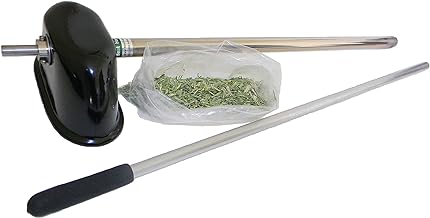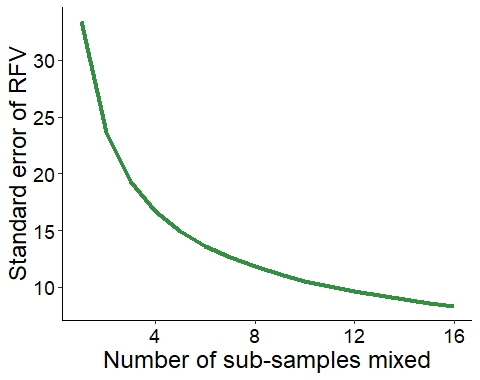Hay Testing
Testing hay is essential for buying, selling, and feeding with confidence. Using proper sampling techniques, choosing the right analysis package, and understanding what drives variation will help get the most value out of testing.
Testing hay is essential for buying, selling, and feeding with confidence. Using proper sampling techniques, choosing the right analysis package, and understanding what drives variation will help get the most value out of testing.

A bale probe is critical for taking a representative sample. Without one, it's nearly impossible to get an accurate sampling of leaves and stems.
If you don't have a bale probe:
When sampling with a bale probe, always start from the shortest side of a square bale or the round side of a round bale. Bale probes are designed to cut across the grain of hay stems.

Even bales harvested from the same field vary from one to the next. Collecting a representative sample requires sampling multiple bales and mixing the sub-samples before sending to the lab.
Mixing sub-samples from at least 12 bales will reduce sampling error by almost 75%.
1) Use a Bale Probe
2) Mix at Least 12 Sub-Samples
$330
$308
$2316
$33149
CNCPS
Select
Basic
Equine Choice
Every Dairyland Laboratory is certified by NFTA (National Forage Testing Association), which sends participating labs 5 alfalfa hay and 1 grass hay sample per year. Labs are then graded pass/fail on their results for CP, ADF, and NDF.
In addition to NFTA, Dairyland participates in additional 3rd party testing programs including AAFCO (American Association of Feed Control Officials) and NAPT (North American Proficiency Testing Association).
End users prefer different indexes depending on their:
Understanding what drives these indexes can clarify what's limiting quality in your samples.
| Inputs | |
| RFV | ADF, NDF |
| RFQ (alfalfa) | CP, NDF, NDFD (24, 30, or 48), NDICPss, Ash, Fat |
| DOMI | uNDFom30, Ash |
| California TDN | ADF |
While each index uses different inputs, all are driven by the amount of fiber (aNDFom) and penalize samples with high soil contamination (ash > 12%).

© 2024 Dairyland Laboratories, Inc.